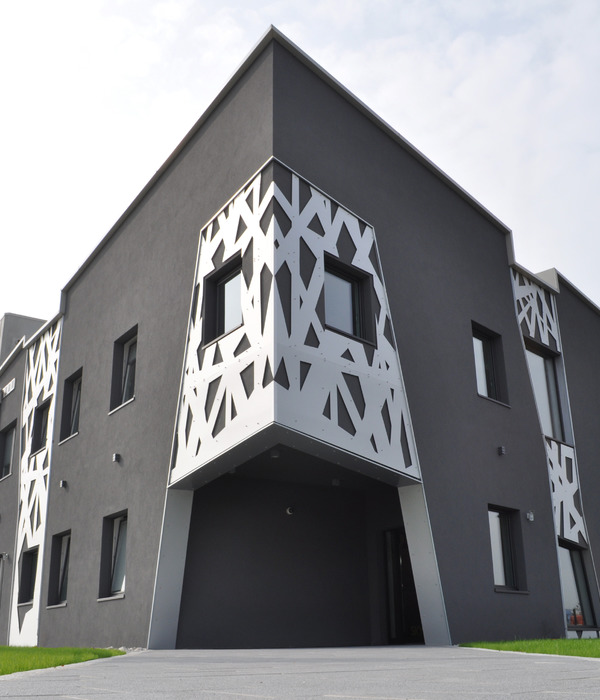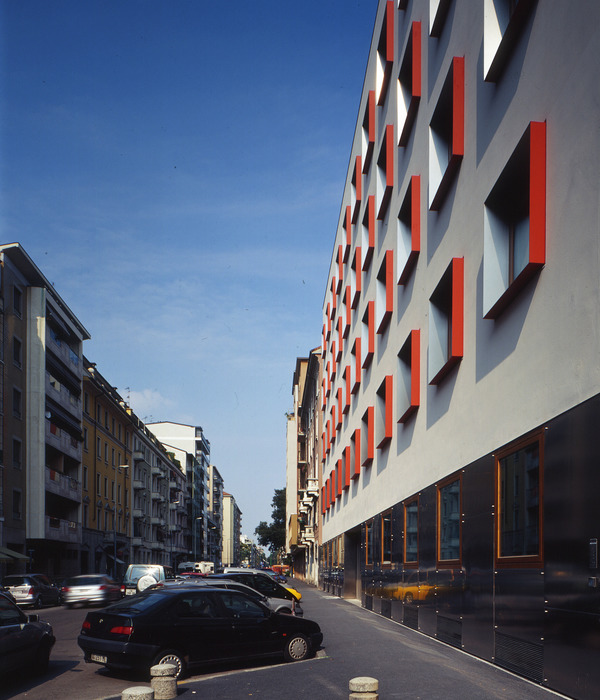太原市的2X工业锅炉房改造后,变成了一个由布鲁建筑设计的通风廊。
‘2x Repurposed industrial boiler room in the city of Taiyuan turned into an airy gallery by CLOU architects.’
锅炉房最初建于1982年,位于中国太原市。房地产开发商万科(Vanke)收购了这座已退役的建筑,并在乌尔巴纳斯建筑师(UrbanusArchitect)翻修后于2010年将其作为销售室开放。2016年,在短短四个月的时间里,这座建筑第二次被拆除到原来的建筑结构,加固后,又一次被德鲁建筑师改造成陈列室。除了作为一个销售画廊,Clou赢得了客户经营2000平方米的展厅作为一个公共建筑,包括一个图书馆,阅览室,会议中心和一家咖啡馆。
The boiler room had originally been built in 1982 in the city of Taiyuan, P.R. China. Real estate developer Vanke acquired the decommissioned structure and opened it as a sales room in 2010 after a renovation by Urbanus Architects. In 2016, in the course of only four months, the building was stripped to its original structure for a second time, reinforced, and once more converted into a showroom by CLOU architects. Apart from serving as a sales gallery, CLOU won over the client to operate the 2000 sqm showroom as a public building including a library, reading room, conference centre and a café.
以前黑暗和洞穴的建筑师开放锅炉房的结构使用透明和半透明的玻璃砖,以使建筑物保持灯光,同时增加功能和休息室周围的主大厅空间。锅炉房的外部,现在是内饰,被漆成鲜红色,以给白天的外墙留下更深的颜色。考虑到装修的速度之快,以及希望以最少的手段最大限度地实现改造的愿望,随时可用的玻璃砖是外墙材料的理想选择。玻璃墙的不透明度在白天随着太阳的位置逐渐变化,而强烈的LED上升灯沿着墙壁在夜间产生红色的“灯笼效应”。
Previously dark and cavernous, CLOU architects open up the structure of the boiler room using a combination of transparent and translucent glass brick in order for the building to harbour light while adding pre-function and lounge spaces around the main hall. The boiler room exterior, now made interior, is painted bright red to give depth to the façade during the day. Glass bricks, readily available, were an ideal choice of façade material, given the breakneck speed of the renovation, and the desire to maximize the transformation with minimal means. The opacity of the glass walls changes gradually throughout the day according to the position of the sun while strong LED up-lights along the walls create a red ‘lantern effect’ at night.
黑白柱装饰了结构,为大厅提供了空间框架。为了营造一种明亮和通风的氛围,Clou使用白色水磨石地板、威尼斯抹灰墙、镀铬灯箱和带有Barrisol表面的天花板。白色的饰面放大了整个外墙的自然日光。相比之下,橡木架子和棕色皮革家具为阅读和其他久坐活动创造了温暖的氛围。
The black and white columns embellish the structure and provide the spatial framework for the main hall. To create a bright and airy ambience, CLOU used white terrazzo flooring, Venetian plasters walls, chrome light boxes and ceilings with Barrisol surfaces. The white finishes amplify the natural daylight that is radiated throughout the façade. In contrast, oak shelving and brown leather furniture create pockets of warm atmosphere for reading and other sedentary activities.
作为建筑“立方体”适应性再利用的一个积极例子,太原市于2017年1月10日向公众开放了它的大门。
As a positive example for adaptive re-use of buildings ‘The Cube, City of Lights’ opened its doors to the public of Taiyuan on January 10th 2017.
Architects CLOU architects
Location Taiyuan, Shanxi, China
Architecture Project Director Jan F. Clostermann
Interior Project Director Jian Yun Wu
Photo Credits Shuhe
Project Year 2017
Photographs Shuhe
Category Retail
{{item.text_origin}}












